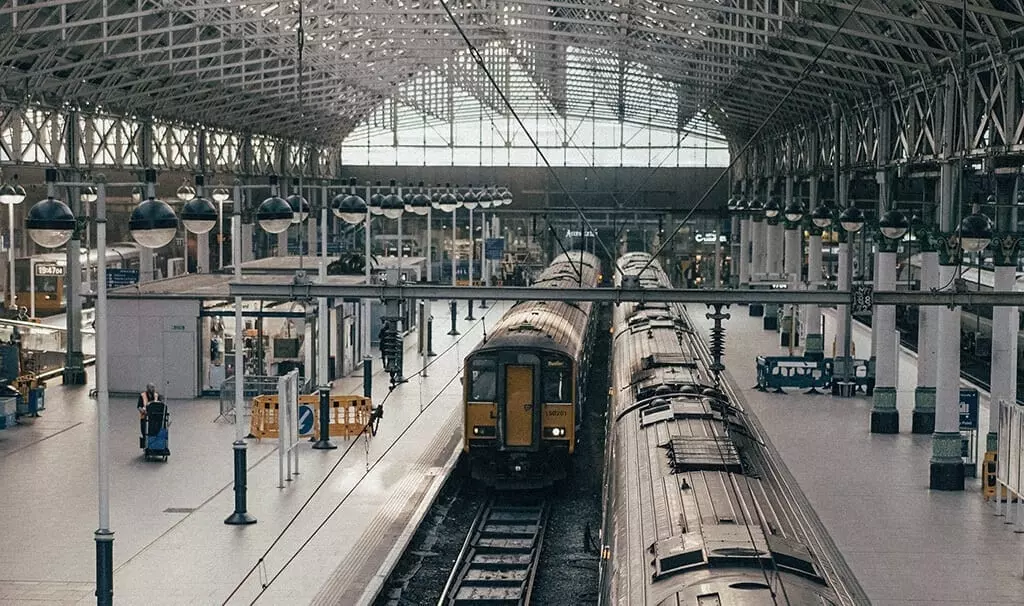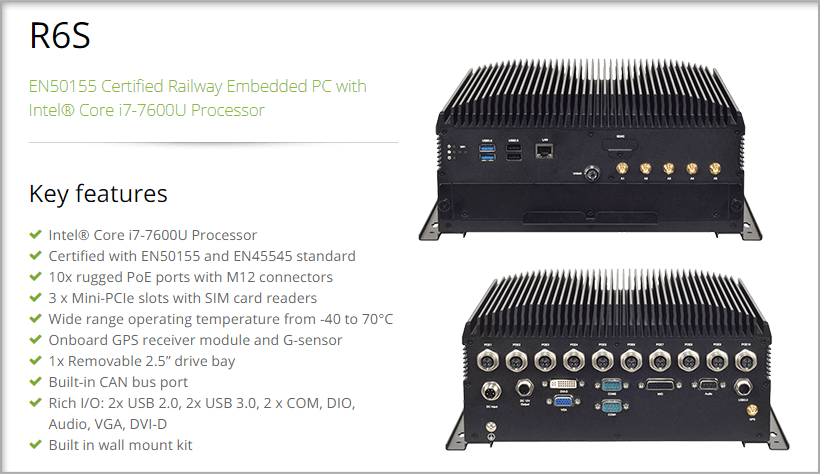
Today, ridesharing companies Uber and Lyft are putting a dent in the whole transportation industry. They already disrupted the Taxi industry and are still looking towards becoming a substitute for public transportation.
Although the train is an entirely different field within transportation, it is also facing similar competition from such providers. Some passengers prefer the predictability, availability, and comfortability that these ridesharing companies offer.
But to keep up, train companies (private or public) need to improve the ridesharing and streamline their costs. Train passengers need to have a positive experience; they need to know that train will be coming soon, or at least that it will be delayed. The Passenger Information Systems (PIS) provide similar convenient and predictable services that these ridesharing companies offer. These services are in line with what today’s passengers need.
Summary
In this solution brief, we will review the common challenges faced by trains and railway companies when deploying and operating a comprehensive Passenger Information System (PIS).
These systems need to collect, synchronize, and distribute PIS data from different trains efficiently and in real-time, making it challenging for any server/computer. The distribution to different types of media like visual and sound within a train can get complicated.
To solve these challenges, Lanner provides the R6S train computer with rich I/O, processing power, GPS tracking, LTE/Wifi support, and certification for rugged environments. This computer centralizes the PIS data collection, synchronization, and distribution within a train.
Challenges
Train passengers will not simply tolerate inaccurate and old information. The days of static route maps and scheduled printed information are long gone.
Today, passengers are moving faster. They are relying more on alternative transportation methods and navigation apps. They demand consistent and real-time information, not only from visual displays in train platforms and stations but also in-transit and even from their mobile phones.
But providing this precise and real-time information to and from an entire rolling stock can be quite challenging. The following are common challenges faced when implementing Passenger Information Systems (PIS):
Collection and Synchronization of Data
By itself, a train knows its position using GPS or might also be able to collect telematics data from on-board sensors or cameras. But a comprehensive PIS should be able to collect and synchronize data with a command center, other trains, and stations. The collection and synchronization of this data of the entire rolling stock are challenging.
- Collecting, synchronizing, and making data available is resource-intensive.
- Collecting of delayed and inaccurate train data might lead to misinformation.
Train Environments are Rugged
Trains are always moving, stoping, and vibrating. They are also faced with sudden shocks, a wide range of temperatures, and other challenges like humidity and different voltage ranges. PIS needs hardware solutions that can withstand these unprecedented extreme conditions, while at the same time keeping data transmission between train and ground efficient and on-time. Current on-vehicle computers are not designed for rugged train environments.
Integration of Visual, Voice, and Sound
In order to reach more passengers and improve their experience, the trains and stations need various dissemination methods to spread travel information— from displays, intercoms, to apps.
A comprehensive PIS needs to provide information in real-time through a set of audio and visual announcements with components like digital signage, microphone, intercoms, and system displays. Integrating all these components without facing some interoperability and incompatibility is challenging.
- The right information must be given at the right time.
- Provisioning information must be latency-free and without delays.
- Trains need ultra-fast access to broadband Internet.
Passenger Information System Solution for Rail
The Passenger Information System (PIS) solution for trains collects and dissipates updated real-time information to passengers. It integrates with various visual and audio components, provides access to the remote command center (or Internet) via wireless communications such as Wi-Fi / LTE for data collection, and is capable of withstanding harsh conditions.
The PIS solution automatically delivers audio and visual information regarding:
- Updated arrival and departure times.
- Potential delays.
- Local weather.
- In some cases, news, entertainment, and advertisement.

The Solution
The solution is based on the following components:
- Visual and audio sub-systems
- In-train computer.
- Train compliance.
- GPS tracker.
- LTE/WiFi connectivity.
- Command and Control Center.
Visual and Audio Sub-systems
A Passenger Information System (PIS) solution integrates various visual and audio sub-systems. These are usually digital sub-systems that interface with the passengers— they should provide real-time digestible visual/audio information to passengers.
The PIS solution inputs media data from a remote operator station with data, microphones, and intercoms. It also provides an output to a sound system, digital signage displays, kiosks, automatic voice passenger information, and even to a cloud-based server running a passenger mobile app.
Examples of these sub-systems are:
- LED panels and screens.
- Sound system.
- LCD infotainment.
Railway Certified In-vehicle Computer
A railway in-vehicle computer for PIS should be rich in I/O to input and output media data; it also needs high-performance processing to deal with large amounts of information in real-time.
Lanner’s R6S is a train computer, fully customized with the right processor, memory, multiple I/O, and internal expansion. R6S is more than an ordinary in-vehicle computer— it is built to receive shock and vibration.
Highlights:
- High-performance Intel Core i7-7600U CPU. Great for controlling audio and video.
- Rich I/O and internal expansion capabilities. It includes 1 x Removable 2.5” drive bay for 2x storages, 2 x COM ports, dual video ports (DVI-D/VGA), USB, and DIDO ports. The computer can also expand with Mini-PCIe Socket x3 with dual SIM card readers for LTE/WiFi communication.
- 10 x M12 PoE ports. It comes with 10 PoE ports with M12 connectors for cameras, actuators, and sensors.
- Rugged vibration and temperature-resistant. R6S resists the constant high vibration and shock of modern or traditional rolling stock. It is also designed with a corrugated aluminum case to cool itself without using fans. R6S can operate under a wide range of temperatures -40°C to 70°C.

Another outstanding feature of R6S is its compliance.
R6S is compliant with EN50155 standard as a fanless rolling stock and MIL-STD-810G for vibration and shock. Additionally, R6S is compliant with: CE Class A, FCC Class A, RoHS, and EN 45545 Features Railway. Two essential compliance for train computers are:
- EN 50155: This is an international standard strictly required for equipment used on trains and in any railway application. EN 50155 ensures that any electrical system on a train can withstands wide temperature, shock, vibration, voltage, electromagnetism, and humidity levels.
- EN 45545: A compliance standard that requires all electrical train systems to follow a strict regulation for accidental fires. This standard ensures that the materials and components do not cause fire or help to spread it.
GPS Tracker:
The computer also comes with an onboard GPS receiver module and G-sensor to help keep track of the moving train.
LTE/WiFi Module:
Additionally, it comes with expansion sockets to add wireless communications. R6S can be expanded with: The NCS2-MINIPCIE02 which is a mini-PCIe/M.2 expansion card with support for Wi-Fi / LTE module. The PGN-600 which is a swappable 4G/LTE CAT-12 radio modem for mission-critical communications (Certified with AT&T and PTCRB, and Compliant with CBRS and FirstNet).
Control Center
The command and control center is the hub of communications between trains and ground. It is where agents can monitor trains and upload content (or stream media) to stations, platforms, or trains via WiFi or LTE. These centers ensure that the PIS data between multiple trains are collected correctly, synchronized, and distributed.
Benefits
The following are benefits when using Lanner’s Passenger Information Systems Solution for Rail.
Enhance Ridership
Improve the number of passengers riding the train. The Passenger Information System solution will enhance the passenger’s experience, as they will have reliable on-time information about when a train arrives or when it departs. Advanced PIS systems can even allow passengers to go through PIS information from their mobiles.
- Reliable and on-time passenger information.
- Improve passenger service with additional offerings (such as a mobile app).
- Support for smart city projects and IoT initiatives.
Real-time Location and Status Updates
The Passenger Information System solution locates the trains in real-time. The R6S’s onboard GPS receiver module and G-sensor will keep track of moving or stationary trains. Or for more precise location tracking, the R6S supports modules with LTE SIM cards.
Each train uploads location information to the command center. All information can be synchronized to billboards at platforms showing estimation arrival times and real-time information about the status of a train.
Reduce CAPEX and OPEX
The Passenger Information System solution for Rail helps make efficient Capital Expenses and Operational Expenses. The solution streamlines the work of the rolling stock employees. It creates a more productive work routine in the command center and helps improve customer help at platforms and train stations. R6S also integrates many audio/visual components, significantly reducing the need for multiple in-vehicle computers.
Other Advantages
Aside from providing information to passengers, the solution can be adapted to provide other critical command and control operations. With the help of fleet management software and video cameras, the solution can provide:
- Video Surveillance and Telematics.
- Fleet Management and Monitoring.
Modern systems may provide more than traditional travel information, such as weather, safety information, entertainment, news, advertisement, etc.
Next Steps
For more information on other Train Computers, Vehicle Computers, or the Passenger Information System for Rail Solution please contact a Lanner’s sales representative.
Photo by Chris Yang on Unsplash. Train vector from Freepik.






